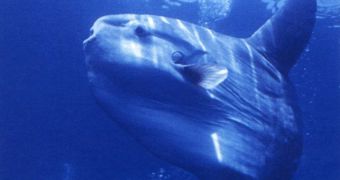1. Ocean life can go from the surface down to... 2.5 km (1.5 mi) under the ocean floor. That's the place where living bacteria were found!
2. At a depth of 5 m (16 ft), 50 % of the solar light is already absorbed. At a depth of 25 m (83 ft), just 3 % of the sunlight penetrates.
3. The base of the food chain is the ocean is made by plankton, microscopical algae and tiny animals feeding on them. The plants (phytoplankton) make photosynthesis, while the animals (zooplankton) stay for the day at depths of 300-600 m (1,000-2,000 ft), to avoid surface predators. Zooplankton is made from crustaceans to worms and the larvae of many fish and mollusks.
4. Jellyfish are considered to be plankton. They vary from 1 cm (0.4 in) in diameter to 2 m (6.6 ft). The Portuguese Man O' War jellyfish is the most dangerous species for humans, with its 30 m (100 ft) long tentacles.
5. Did you know that sharks and rays cannot move backward? While bony fish have the swimming bladder for flotation, sharks and rays have their huge fatty livers for this purpose.
6. The largest bony fish in the ocean is the sunfish (Mola). The two tonnes fish stays at depths of 300-400 m (1,000-1,300 ft) during the day and ascend to the surface during the night, to feed on plankton.
World's largest fish, the whale shark, up to 2.65 m (41.5 ft) long, and weighing over 21.5 tonnes, also feeds on plankton. Manta ray, up to 7 m (23 ft) between its "wing" tips, is also a plankton eater.
7. Fish living at depths of over 1 km (0.6 mi) are considered abyssal.
8. Sea snakes can stay up to 8 hours underwater. Just some sea snakes go out of the water to lay their eggs. The venom of the sea snakes is more powerful than that of the cobra, paralyzing the victim.
9. Around submarine volcanoes, life communities form, based not on solar energy, but on the Earth's. Giant clams, the size of a plate, mussels, crabs, fish, octopuses, snails, sea cucumbers and huge tubular worms (up to 3.5 m or 12 ft) live on a food chain based on bacteria that form food not through photosynthesis, but chemical reactions using the heat of the volcanoes.

 14 DAY TRIAL //
14 DAY TRIAL //